
harrybarbon
-
Posts
339 -
Joined
-
Last visited
Content Type
Profiles
Forums
Gallery
Events
Blogs
BMT Wiki
Collections
Store
Posts posted by harrybarbon
-
-
Apologies the system will not allow the Youtube video to be uploaded, you have to get it through Youtube
-
Attached is the Video of the 2009 Wildwood 75 Chrome Truck show with Wayne Tomlin interview
-
At the 2009 Wildwood Florida Truck show, hosted by 75 Chrome Shop, a guy named Wayne Tomlin of High Performance Research and Development, Bradenton Florida was interviewed about his company's Peterbilt - it had a Cummins engine and Wayne said he and his company had developed a hydrogen system that supplied hydrogen into the motor via the air inflows which produced increased torque and horsepower plus better fuel mileage.
This hydrogen unit was fitted onto the Cummins motor. If you google 75 Chrome Shop and go to the Truck shows there is a video of the 2009 show.
I will try attaching the Youtube video
Does anyone remember anything or has any information about this hydrogen system? Was it real or not?
I am told he is no longer in business.
-
We have converted an E6-350 HP 2 Valve Turbo Econodyne engine with Intercooler in front of the radiator - ( it came out of an R686 )- to a Tip Turbine with Turbo set up - same set up as the the 285 HP Tip Turbine/Turbo motor in the attached picture.
We have fitted the converted E6 into a B model.
Have any Mack owners made this conversion and/or know what performance/power the converted 350 produces with the Tip Turbine set up?
Our converted E6
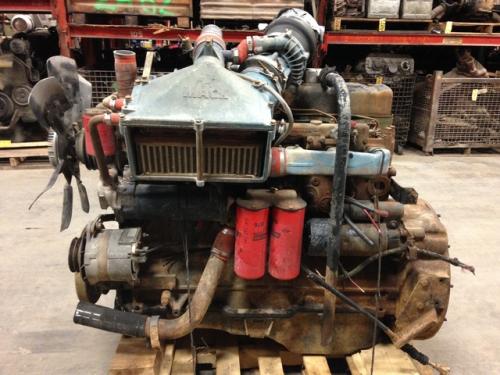
 motor has the Mack 1070 - 10 speed overdrive gear box that came with the E6 motor and we have 4.17 rears on R11/ 22.5 wheels.
motor has the Mack 1070 - 10 speed overdrive gear box that came with the E6 motor and we have 4.17 rears on R11/ 22.5 wheels.-
 1
1
-
-
- Popular Post
- Popular Post
-
Yes we got confused about the 2 products. When we first made our enquiries about Lizard skin there was only ONE product - it was called Lizard skin and this product is both a sound control and thermal insulation - hence the reason for the fry pan test. Then a couple of years later they developed a separate product for sound control - which I think is called Sound Control. The advice from the Lizard skin company, for the correct application process is - clean/strip the metal surface to bare metal removing all rust - prime coat the metal - apply 1 (or 2) coats of Sound Control - allow to dry properly ( in dry warm temp 3 hours max) then apply 1 (or 2) coats of the Lizard skin insulator.
Yes we applied both products to maximise the benefits in our B model cab for sound reduction and the heat reduction in the cabin.
-
Thomas thank you for the tape info. Here the air con guys use extensively what is called duct tape on ducts and it does not last. It's a big seller at the hardware shops.
Vlad - Re the lizard skin would be good to get some free product and I have no financial interest just an interested user, probably our guys have used it on 6 trucks to date.
We spent some time researching for a real insulator and sound proofing product because there usual products are not really 100% sealers and so if water or moisture gets behind the dynamat and similar products, carpet etc that is the start of rust and we find out when it is too late. The lizard skin is a real sealer gets into all tight blind spots so no water will get in and it is flexible. For old trucks there are many holes and cracks to allow water and air in so when good labour and money is spent on restoring etc the hidden sections need to be properly done then peace of mind.
I have posted this info so others can benefit from our research, sharing info is for all to get some progress in their truck projects and general knowledge. Good luck with your projects.
And yes our fry pan experiment did happen and no burnt skin, I think we stil have the fry pan in the work shop.
-
 2
2
-
-
Vlad
I cannot recall the quantity used. Please Google "Lizard Skin" web site and it has all the technical info, including coverage per 2 gallon plastic container that it is supplied. Good reading and the information is accurate. We have made our own experiments including the FRY PAN test.
It is very popular with the USA hot rod shop guys, many of them apply the Lizard skin as standard product on their jobs for insulation and sound.
Also if you buy it, any left over will last for many years, leave it in the plastic container, press the plastic lid tight and then run the wide plastic duct tape around fully sealing so no air gets inside, turn the container upside down. Leave it in a cool, dark and dry place. When you want to use in future, take out what you require add some water and stir it to get a smooth paste then apply - don't make it to runny, again any left over put back into container and stir in with what is in the container. We have a container now about 9 years old and continue to use the Lizard skin fro time to time. Must seal the container air tight.
It has many other applications - example - air conditioning ducts in houses and buildings, where they are joined usually duct tape is used to seal the joint - this tape within 1-2 years the glue breaks down because of hot and cold temps, the ducts come apart in the ceiling or under floors and often we cannot see there is a problem we loose heat and cool air - easy solved - paint a coat of lizard skin around the duct tape plus approx 30 mm or 1.5 inches over edge of the tape all around the duct - it will never come apart. Also a black flexible plastic air cleaner hose on our car engine approx diameter of 4 inches - 75 mm, had a split about half the diameter, we cleaned the area around the split held joint tight - used a small children's artist brush to apply a coating of lizard skin with approx 10 mm overlap both sides of the split let it dry fro 1 day, next day gave the dried lizard skin a fine sanding to smooth the rough bits of the dried Lizard skin - hard to see the repair and has been operating for 3 years no further breakage. It is flexible. Can also be used in building work as an insulator around light fittings in ceilings for fire protection, split or cracked windscreen water bottles because it is water sealer as well - a very useful all round product to have on the workshop shelf.
-
Yes the first primer is a metal primer to seal the metal or fiberglass or aluminium body panels. And yes if the lizard skin is to be painted with a top coat then a flex must be added into the top coat or as we did added to the hyfill. On the underside of the hood we sprayed the lizard sound control and then a couple of coats of green top coat to hide the dark grey lizard skin - we added flex in the top coat.
Re the foam products we have not used them, we checked them out but they don't stick and seal same as the lizard skin. We have used the foam for building plumbing jobs and other general building maintenance jobs filing holes - can't compare the 2 products they are made for different uses. Old story do the homework, use the most appropriate product labor time usually about same hours, get job done properly once and don't look back.
-
The filler is hyfill that we sprayed onto the body panel after prime coating to produce a smooth surface finish before spraying the final top coat - on our cab it's the Irish green. To explain our process for the fire wall, on the engine side, cab stripped to bare metal, rust etc repaired, spray primer, then on the fire wall - engine side - we sprayed first the Lizard skin - the sound control,let it dry and lightly sand to remove rough finish, then we sprayed the second product the lizard skin and also did a light sanding after drying (they have the 2 products and must be applied as noted here), then we sprayed the hyfill - we added a paint flexible additive to the hyfill to make it flexible before spraying, the hyfill was sanded back and a second coat of hyfill with flex additive applied to get a complete cover and it was sanded resulting in a smooth surface, let it dry for 1 week then we sprayed the top coat (Irish green) which also had the flex additive - the pictures show the final result - fire wall is as smooth as the cab exterior and no peeling as we had when we painted without the flex additive - now 18 months since applied we have had extremely hot and 2 very cold winter temperatures and no peeling. We also applied the sound control and the lizard skin onto the cab interior side of the fire wall - so the fire wall is sandwiched on both sides with the 2 lizard skin products, we also did same to the cab floor (no hyfill because there is no top coat paint) the all other non painted surfaces inside the cab even behind the dash board - application inside the cab was max 30 minutes and a thin coat (thickness of a credit card) and just to be sure we gave a second thin coat.
It is a simple, easy product to spray onto metal and other surfaces and non toxic product - easy to wash up with water and it fills all the weld joints and metal joints and hard to get spots
Vlad the lizard skin is a rubber like skin with golf ball finish once it dries, it is now approved by the US car companies as an after market rust protector for repairing accident damage, for all underside panels. The inventor of lizard skin crated it from the space shuttle products used on the heat tiles around the shell of the space shuttle. There are other similar products that are based on the air bubble technology. The air freight couriers like DHL will transport the product, we got our first 2 gallon pails by DHL post 9/11, no problems. There are some web sites that you can read up on that people have written and compared the various sound and temp control products - worth reading. Good luck with your project.
-
Vlad - don't know how it compares to polyurethane undercoats - the 2 lizard skin products are water based and are applied after the base metal is prime coated with a traditional priming paint, which are usually an oil based product. Before prime painting good advice is to remove all surface rust. Best to go to the Lizard skin web site and read the technical information. If you need any further information send an email to the company and they will provide answers, I have emailed and called them, they have been very helpful when we had the problem applying the filler on top of the lizard skin on the engine side of the fire wall, it de-laminated the lizard skin off the fire wall, they resolved the problem telling us to add a flex additive to the filler and the green paint same as for painting the plastic curtain sides on tautliners. Has been on for 12 months all good and clean smooth finish on top coat as pictures show.
-
And I forgot to mention the lizard skin is flexible so it flows into all the cracks holes etc, especially the hard to get to places, it will go everywhere, the long flexible hose spray will go to all places especially the doors - so you won't have future problems with water penetration or air leaks it literally seals the cab - you can spray all inside the cab in under 30 minutes once prepared - let it dry and job finished, do the doors and they sound like alloy or fiberglass panels - tinny sound disappears
-
 1
1
-
-
- Popular Post
- Popular Post
As J Hancock wrote - use the Lizard skin products - first use the sound proof then apply the original Lizrad skin. We have applied on 4 Mack truck projects and it works. Have applied to both sides of the fire wall, then when you paint the engine side of the fire wall you have to add paint flex into the paint colour if not the paint will peel off - we got the formula right on our B75 build and the fire wall paint finish is same as external panel finish and no peeling. Use the 2 products on all inside panels especially the doors, and both sides of cab floor, very easy to apply, more time to tape up to stop over spray. It is water based so easy non toxic clean up with water. Dont over spray to thick because it works with thin cover, must follow the instructions and dries real quick. Great insulation as well - the original owner / inventor Bob Call from Arizona used to to go to hot rod shows with lots of fry pans to do his fry pan demo - he applied lizard skin to the inside of the pan let it dry in a few minutes then heat up pan to 400 degrees and he then placed the palm of his hand on the inside base of the pan - no heat and no burning of his skin. We did the same to see if he was honest - and he was 100% correct - we did it in steps just in case, hard to believe yes he was right Here are some pictures, the fire wall has the sound proof and lizrad skin on it, hyfill on top and then the green paint over the top, other picture is the under side of the 2 infill panels next to the fenders .
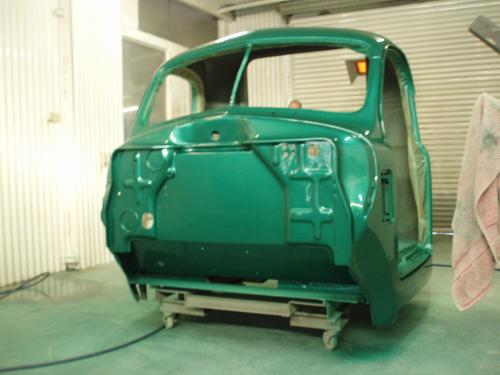
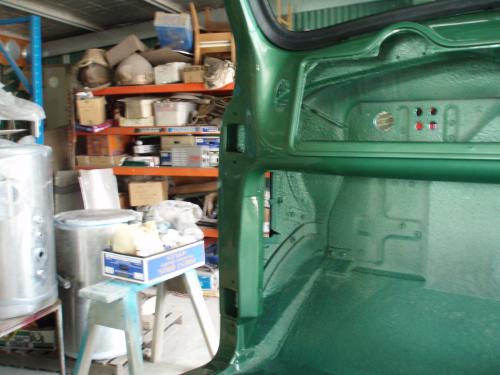
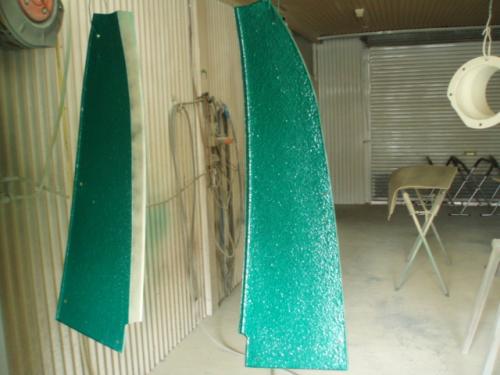
-
 3
3
-
This is tony's Mack Jr
-
-
send them by sea mail, longer time but lowest cost - UPS and the like are full price
-
I had our shutters cleaned by a soda blast shop, excellent clean and most important the rubbers were nopt damaged - I would suggest you apply a good rubber lubricant onto the rubbers before the soda blastlet it soak in thoroughly - after soda wash reapply the rubber lubricant onto the rubber before polishing the shutters.
-
Put a good penetrating rubber protect product onto the rubber strips that are at the back of each shutter blade, before you do anything on the shutters - try using a good quality liquid type product and you can apply with an old tooth brush so you get into the groves where the rubbers are set. Let the product penetrate and dry before you polish the shutter blades, and try avoid the aluminum polish getting onto the rubber strips. And then after you finish polishing apply another coat of rubber protection product. Avoid any harsh chemical washing products on the rubbers.
-
TNT was started in Australia after WW2 by Ken Thomas ( a returned soldier ) in Sydney Australia, trucks were orange and white. Many of it's drivers were former WW2 pilots who could not find work as pilots and the truck driving paid maybe 3 or 4 times what a commercial pilot was paid during late 1940's and 1950's. All senior TNT mangers were former truck drivers that progressed through the company, very few had formal education and they were good operators. TNT also operated Kwikasair and Comet Overnight in various countries. Over time during 1970's it became a world wide company, public listed on Australian Stock Exchange. TNT was Thomas National Transport. It got into trouble in the late 1980's under new management (wrongly Ken Thomas and his team were pushed out of the company) when it bought a fleet of BAE 46 jet aircraft to compete with the Dutch Post Office. TNT also owned Ansett Airlines with NEWS Corp (Rupert Murdoch) which ran into trouble because they bled the very profitable airline dry to fund their respective overseas expansions. Eventually Ansett was sold to Air New Zealand and it stopped operations around 2000. TNT failed, the Dutch post office bought most of TNT world wide, sold many unwanted parts. However Murdoch's NEWS Corp prospered. At least the name TNT continues - some 70 years. Who remembers the AC/DC ( also an Aussie rock band) song TNT!!!!!!
-
 1
1
-
-
-
- Popular Post
- Popular Post
-
Have you spoken to Ian Lee at Tylden Heritage Kyneton Victoria, if not he is an excellent person to get real practical and sensible ideas for custom Mack trucks and engines check his web site at tylden hertigae
-
For your rubber products, windows etc contact the guys at www.restorationspecilaties.com
We have bought a number of rubber parts from them, including reproduction of the rubber base of the original cab marker lights and the felt for the glass lens or plastic lens - they fit perfectly
They have a good product range, window rubbers, doors etc they may also have the cab mounts price is competitive and service is also very reliable, they travel to lots of shows it's a husband and wife operation however they always reply to emails or call them.
-
Vlad
The grab handle in your picture is solid stainless steel, we have bought some sets of this handle from Watts. They are not the original B model handles. The original B model handles are chromed hollow steel plate and they were a standard accessory used on Kenworths Peterbilts and other trucks.
If you want these original style used on the B models Courtland Truckworks in Courtland, California (they are old Peterbilt specilaists) supply reproductions of the originals, send an email to Mike, they sell/export around the world - we have bought a number of the original style handles for our B model they are good exact reproductions
Mike's email is truck_works@yahoo.com
They also have a web site you can find on goole under Courtland Truckworks


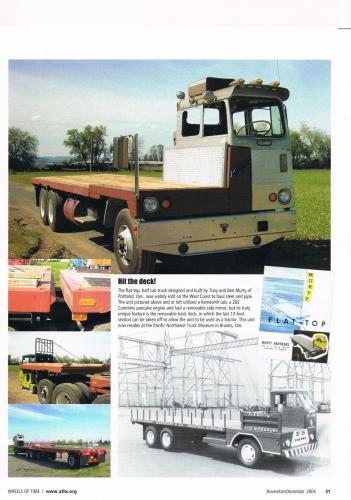
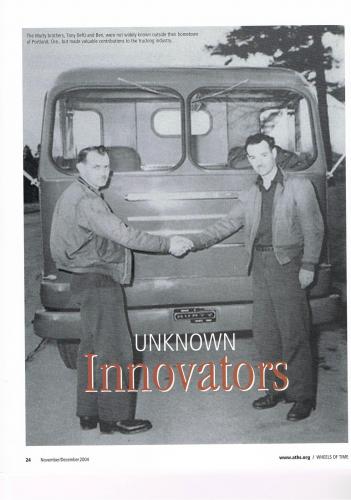
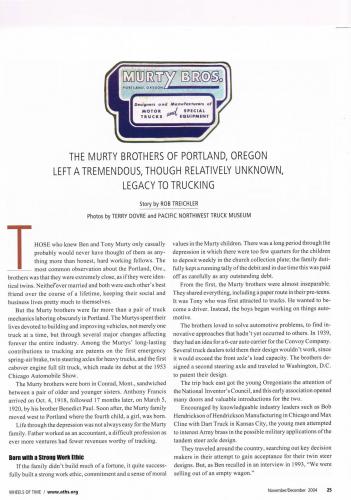
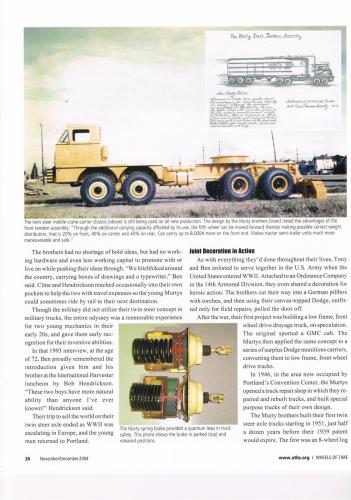
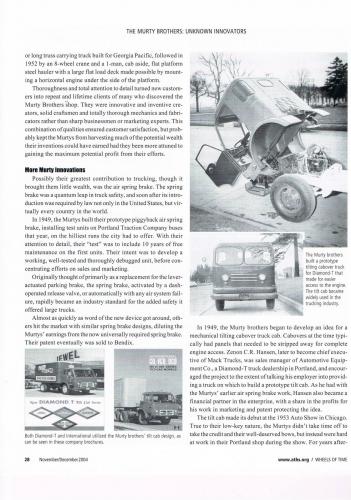
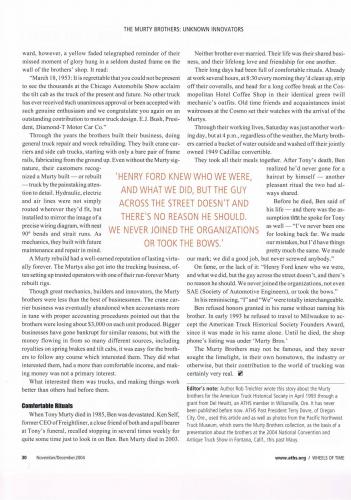
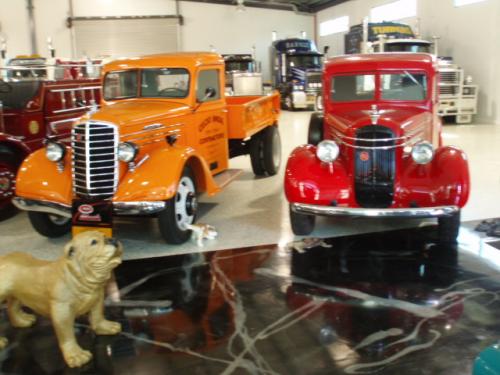
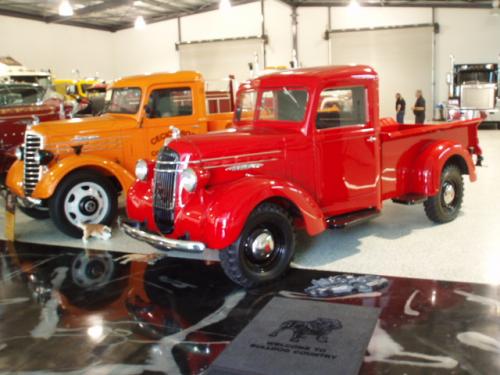
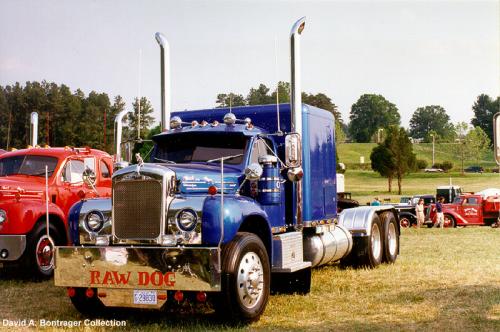
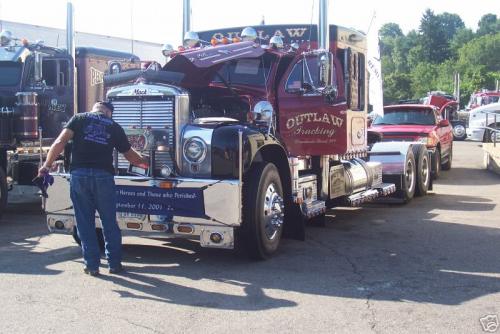
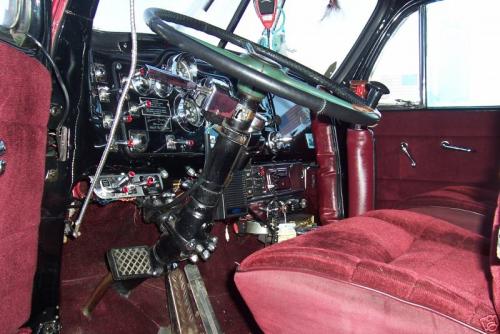
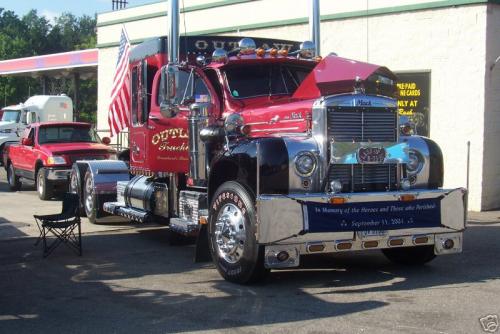
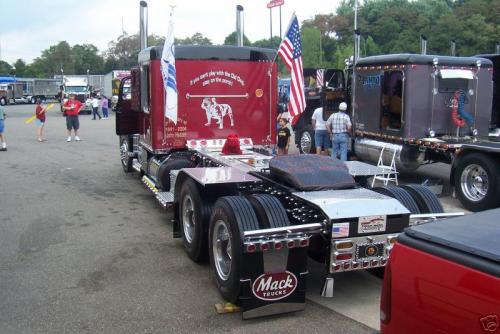
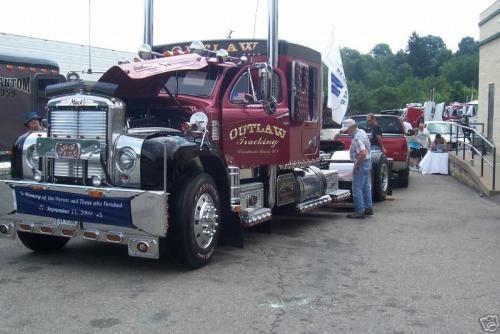
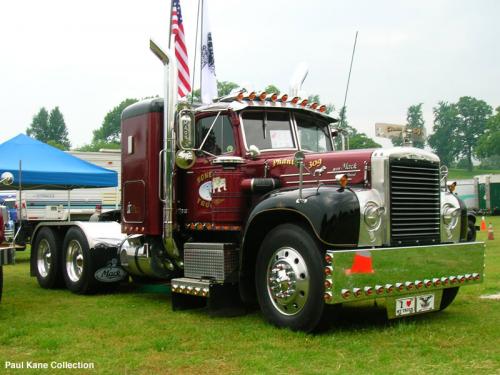
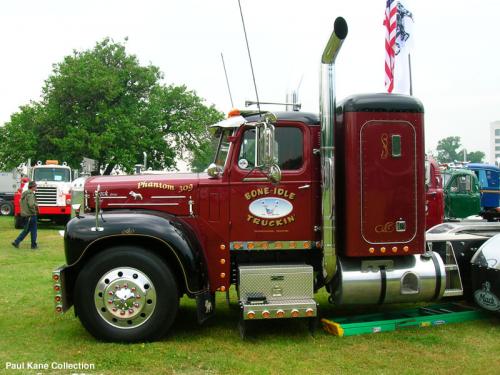
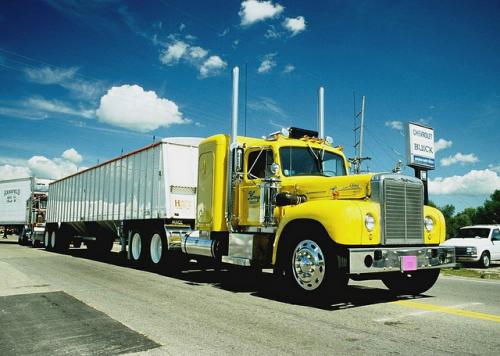

Hydrogen Motor Unit attached to Diesel motor
in Engine and Transmission
Posted
At the 2009 Wildwood Florida Truck show, hosted by 75 Chrome Shop, a guy named Wayne Tomlin of High Performance Research and Development, Bradenton Florida was interviewed about his company's Peterbilt - it had a Cummins engine and Wayne said he and his company had developed a hydrogen system that supplied hydrogen into the motor via the air inflows which produced increased torque and horsepower plus better fuel mileage.
This hydrogen unit was fitted onto the Cummins motor. If you google 75 Chrome Shop and go to the Truck shows there is a video of the 2009 show.
I will try attaching the Youtube video
Does anyone remember anything or has any information about this hydrogen system? Was it real or not?
I am told he is no longer in business.